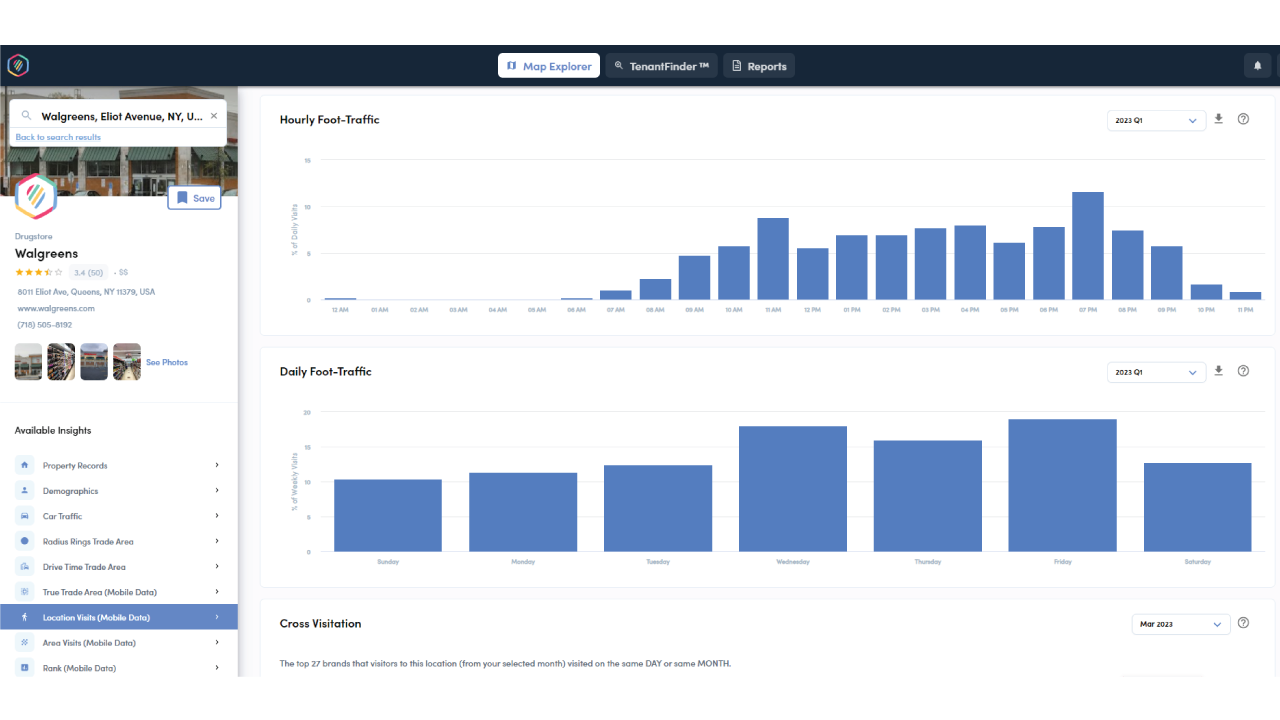GIS analysts help commercial real estate investors, developers, and brokers make smart decisions, and are an asset to any team. With the advancement of geospatial analytics tools, the role of GIS analytics in commercial real estate is slowly changing.
Read on, to learn about what a GIS analyst does, and why GIS analytics software should be an essential part of your commercial real estate toolkit.
What is a GIS Analyst?
GIS analysts make meaning out of maps and spatial data using geographic information systems (GIS).
While they work across many industries such as engineering, land surveying, map-making, IT, and more, they are also very useful in commercial real estate.
In commercial real estate, GIS analysts use geospatial data to create analytical frameworks which help their teams make important decisions like selecting an ideal location for a property, analyzing property deals, and so on.
How do GIS Analytics Tools Help GIS Analysts to do their Jobs Better?
Historically, tools available to analyze and visualize geospatial data were quite complicated and truly required an expert GIS analyst to use properly (tools like Esri, AutoCAD, and QGIS).
With increased accessibility of data and other advancements, newer solutions are providing a significantly easier experience. These newer GIS tools provide access to a powerhouse of analytical data.
Essentially, today’s GIS software can process and compare a lot of complex data, which removes the burden of data entry, creating comparative frameworks, making reports, and other time-consuming tasks.
They are also user friendly, which makes them easier for everyone on the team to use. In fact, many real estate companies that would previously have needed a dedicated GIS analyst don't need them anymore.
Furthermore, those that do have one in-house, are able to level up the playing field by producing better quality reports, more quickly, than they have in the past.
What Do GIS Analysts Use GIS Analytics Tools For in Commercial Real Estate?
GIS tools help real estate professionals and analysts make sense of complex data sets which can be useful for various tasks across commercial real estate.
Market Segmentation, Trade Area, and Demographic Analysis

A market segment is a subset of the population that shares similar needs, motivations and behavioral patterns. Each market segment has similar demographics and also psychographics.
Market segmentation helps businesses identify the appropriate target markets for their product or service.
GIS analysts use geospatial tools to identify where certain market segments live, shop, and work. They use this demographic data to calculate trade areas (and more) for specific locations.
This information is vital to commercial real estate professionals who might be choosing a location for a new retail store or franchise, for example.
Predicting Future Real Estate Market Trends in a Specific Region
GIS software helps CRE professionals predict future market trends with a lot more accuracy than guesswork.
This can be done by analyzing geospatial data from the past and present, and predicting how the situation might change in future.
Finding New Opportunities for Commercial Real Estate Investment
By analyzing demographics and psychographics as they relate to specific locations, GIS analysts can compare the potential profitability of certain locations over others.
They may also be able to identify overlaps and gaps in the market in some locations, which can be done through a void analysis.
Selecting an Optimal Retail Business Location
Choosing an optimal, and profitable, location for a brick-and-mortar store is an important business decision that should be underpinned by detailed research about the store’s ideal customers and where they are located.
GIS analysts can create in-depth reports using geospatial tools which help them to analyze trade areas, foot traffic data, drive time, performance trends, and much more.

Making Comparisons with Competitors
GIS analytics tools are useful for making comparisons with competitors.
In commercial real estate these comparisons might be used when preparing a broker opinion of value for a property owner who wants to compare their property price against recent sales in the area.
When choosing a business location, for example, you can use geospatial software to rank options in order of suitability, and also analyze the performance of competing retail brands in their specific locations.
The GIS Analyst of the Future
Understanding what GIS analysts do and why geospatial software helps them do their jobs better, is only part of the picture. You might be wondering, if today’s GIS tools are becoming so powerful, what will the role of a GIS analyst be in the future?
While the true answer is of course, no one knows for sure, a good guess is that analytics software, combined with artificial intelligence, will eventually become so advanced that it completely relieves real estate analysts of their repetitive, time-consuming tasks. Thus, freeing them up to focus on the high-level, strategic-thinking tasks that only humans can do.
This also likely means that commercial real estate professionals will need to keep up with the latest GIS software to remain competitive. There are several options available on the market today. It’s important to take the time to explore them and figure out which one serves your business goals the best.



.jpg)